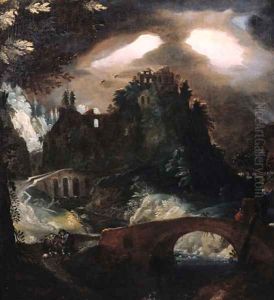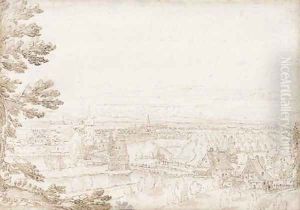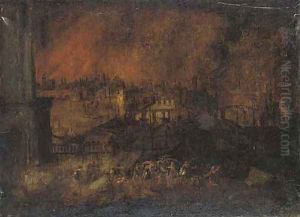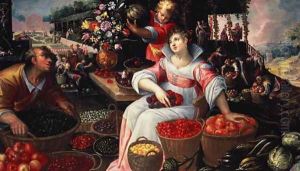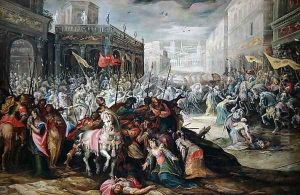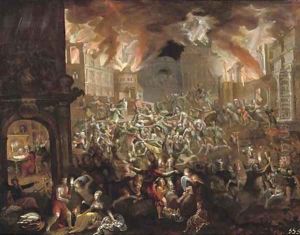Frederik Valckenborch Paintings
Frederik van Valckenborch was a notable Flemish painter born in Mechelen, now in modern-day Belgium, in 1566. He came from a family deeply entrenched in the arts; his father, Marten van Valckenborch, was a well-respected painter, and his brother, Gillis van Valckenborch, also pursued a career in painting. This familial background provided Frederik with an early exposure to painting and the arts, setting the stage for his future career. The van Valckenborch family, due to religious persecution related to their Protestant faith, relocated to Frankfurt am Main in the Holy Roman Empire around 1586, where Frederik’s career would eventually flourish.
Frederik van Valckenborch is best known for his landscape and cityscape paintings, which often incorporated elements of the fantastical and the idyllic. His works are characterized by detailed depictions of nature and human activities, imbued with a sense of harmony and often framed within a panoramic perspective. This was reflective of the broader Northern Renaissance movement, which placed a high value on detailed observation of the natural world and human life. Frederik, much like his family members, was influenced by the landscape conventions established by Pieter Bruegel the Elder, integrating complex narrative elements into his works.
Throughout his career, Frederik van Valckenborch managed to establish a significant reputation across Europe. His works were sought after by patrons and collectors, highlighting his success in capturing the imagination of a diverse audience. He was not only a painter but also engaged in the creation of prints, contributing to the dissemination of his and his family’s artistic style beyond their immediate geographical location.
Frederik van Valckenborch's legacy is preserved in various museums and collections around the world, showcasing the enduring appeal of his landscapes and cityscapes. Despite the challenges of his time, including religious upheaval and the pressures of maintaining artistic integrity within the shifting demands of patrons, Frederik’s work remains a testament to the enduring power of landscape art to capture and inspire the human imagination. He died in 1623 in Nuremberg, leaving behind a body of work that continues to be studied and admired for its contribution to the Northern Renaissance and the development of landscape painting.
